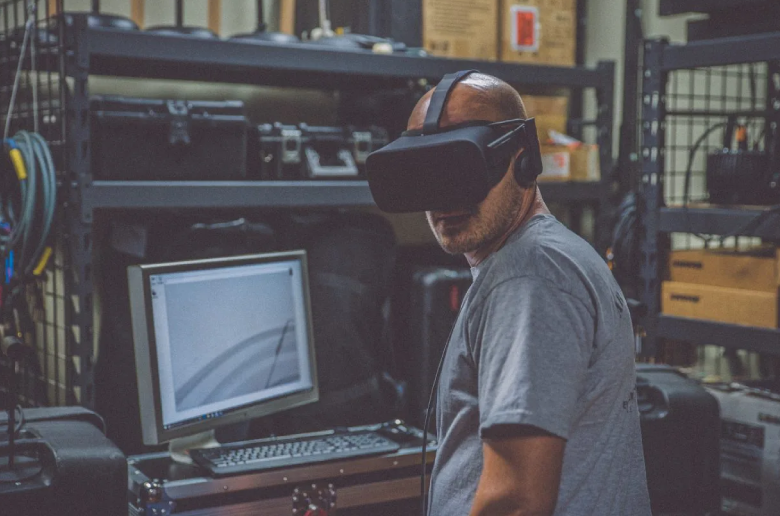Renowned economist Theodore Levitt once said, “Creativity is thinking up new things; innovation is doing new things,” and that sentiment, nearly 70 years old, couldn’t be truer than it is in this consumer-centric digital age. The ongoing problem is that very few organizations are innovating in an effective way, let alone creating a roadmap for others to follow. During a recent GDS CX Innovation Summit, however, the Executive Advisor to the CEO for Future Technology at H&M, Alan Boehme, gave a riveting presentation on how he and his team are not only blazing the trail in fashion retail innovation, but setting new CX standards. Here are some of the key insights from Boehme, and how other organizations, regardless of industry, can innovate by asking a two-word question
What If?
In a world of constant change, be it consumer mindsets, geopolitical concerns, or industry-specific shifts, organizations need to constantly ask themselves a seemingly simple question: What if? According to Boehme, “The question of ‘what if’ is something that we very rarely ask ourselves, and the reason is that we’re too caught up in the day-to-day. It’s a question we typically don’t get to ask once, but now that tech is moving so quickly, it’s a question we need to ask every day so we can find out where to go. ‘What if’ is the key.” But what does that mean, exactly, and how can organizations get this question to work for them in the realm of customer experience innovation?

Universal and Accessible Experiences
This is where it gets tricky, as consumers in Europe have different expectations and desires than those in the United States. In fact, Boehme pointed to a survey that showed consumers in the US are more concerned with convenience, while their European counterparts are more interested in the buying experience. What this amounts to is much more than being mindful of differing mindsets – it’s about asking, “What if we can make these experiences universal and accessible?” And, as Boehme explained, “H&M’s founder, Erling Persson, built this company with that very question in mind from day one: ‘What if we can make fashion available to everyone?’.” That philosophy was innovative unto itself 75 years ago, but has set the standard for the company’s approach to customer experience ever since.
Making Byproducts into Products
Regardless of location, one growing factor for consumers’ choice of companies to buy from has been sustainability. This led Boehme and his team at H&M to look at one of the things that has been greatly impacted by humans and climate change: the air. The question then became how to take carbon, a byproduct of everyday life for humans, and turn it into a product. So, they found a way to extract that carbon from the air and produce frames for glasses and sunglasses, a sustainability effort that couldn’t have been accomplished without asking – you guessed it – “What if?”
Technology and Accessibility
It goes without saying that technology and innovation go hand-in-hand and have for quite some time. After all, how did Henry Ford bring about the concept and realization of mass production? Technologically speaking, things have rapidly accelerated in the 100+ years since then, as have the expectations of consumers. And so, for H&M’s pursuit of making the customer experience more personalized and less about guesswork, they asked the question, “What if you had clothing that fit you perfectly?” Enter: body scanning. Boehme explained that one of their retail outlets in Stockholm has the ability to scan a customer’s body and produce denim jeans that will fit the customer perfectly, a serious deviation from the normal mass market approach where everybody fits into a specific size. Now, naysayers can point to tailors and seamstresses and say, “Custom clothing has been around for centuries.” “Yes,” agrees Boehme, “but they can’t do it at scale.”
Mr. Ford would surely agree.
Tomorrow’s “What If”
For Mr. Boehme, the “What if” of the future goes well beyond the next horizon that we see. And, beyond that horizon, all roads lead to experience. Gone are the days of consumers being easily persuaded by targeted and guided marketing. Instead, today’s shoppers are guiding sales and marketing teams with their behaviors. In fact, Boehme explains “The next generation of shoppers currently start online and sometimes finish in-store,” adding, “this is no longer going to be the exception – this is the norm, and this next generation is influencing their parents and friends more than anything else.” Furthermore, they’re delving deeper into the metaverse and virtual worlds which only open a whole new set of “What ifs,” not the least of which is what they expect from their overall experience
What If: Realized
In closing, Boehme made a salient point about how these future “What ifs” can only be realized through partnerships, even the unlikely ones. “Partnerships and collaboration between like-minded and sometimes competing organizations is the way that we will change the world. Partnerships between people that have common values, common customers, and [common] needs is how we will grow our businesses together.”
Now, what if we make that reality…
CX Innovation
GDS Summits are tailored 3-day virtual event conferences that bring together business leaders and solution providers to accelerate sales cycles, industry conversations and outcomes. Regarding the CX Innovation Summit 86% of Delegates said the overall experience of Digital Summit they attended was either Above Average or Excellent and 71% of Delegates said the Digital Summit provided them with actionable outcomes to support their current initiatives.
For more, click here to hear from attendees on how GDS has helped them to achieve their business outcomes.
Continue the debate at GDS’ CX Innovation Summits where we bring together senior marketing executives who are actively seeking to share, learn, engage, and find the best solutions.














